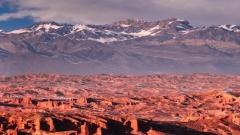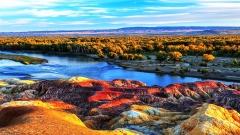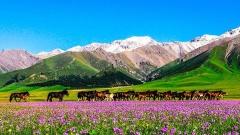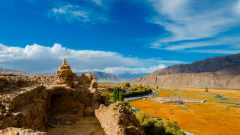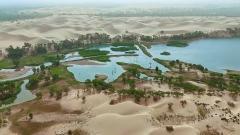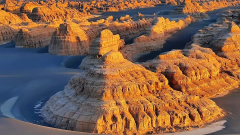When travelers think of Xinjiang, vast deserts, snow-capped mountains, and Silk Road trade towns often come to mind. Yet hidden among the sand dunes and dry riverbeds of this region lies another treasure: the lost Buddhist kingdoms and the ruins of their desert monasteries. Once flourishing centers of culture, art, and religion, these sites tell the story of how Buddhism spread across Central Asia into China and how kingdoms rose and fell along the Silk Road.
The Buddhist Legacy of Xinjiang
From the 2nd century BCE to the 14th century CE, Xinjiang was more than just a trade route. It was a crossroads of civilizations. Caravans carried silk, spices, and jade, but also monks, scriptures, and ideas. Buddhism first entered China through these corridors, and desert kingdoms like Khotan, Kucha, and Turpan became major spiritual and artistic hubs.
The monasteries built in these oases served not only as religious sanctuaries but also as centers of education, art, and diplomacy. Murals, manuscripts, and sculptures discovered here reflect a fusion of Indian, Persian, and Chinese influences—truly a cultural melting pot of the Silk Road.
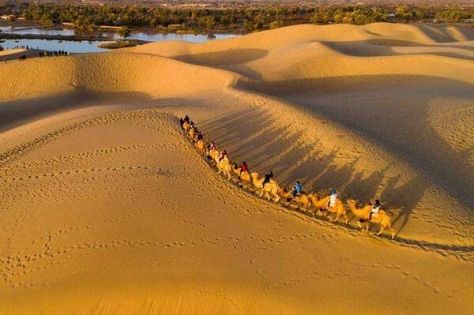
Taklamakan Desert
Famous Desert Monasteries and Ancient Sites
1. Kizil Caves (Kucha)
Known as the “Oriental Dunhuang,” the Kizil Thousand Buddha Caves are among the earliest Buddhist cave temples in China, dating back to the 3rd century. The caves feature stunning murals depicting Jataka tales, Central Asian merchants, and early Buddhist iconography, providing rare insight into early Silk Road art.
2. Bezeklik Caves (Turpan)
Perched above the Flaming Mountains, the Bezeklik Thousand Buddha Caves once housed vibrant Buddhist murals. Although many were damaged over centuries, visitors can still see fragments of intricate wall paintings and imagine the spiritual life of the monks who once lived here.
3. Subashi Temple Ruins (Kucha)
The Subashi Monastery was one of the largest Buddhist temple complexes in the Tarim Basin, built between the 5th and 7th centuries. Its remains—towering walls and pillars—stand starkly against the desert, offering a haunting glimpse of a once-grand kingdom.
4. Rawak Stupa (Hotan)
In the sands near Hotan lies the Rawak Stupa, a monumental structure from the 3rd–4th century. Though partly eroded, its size and significance mark Hotan’s role as a center of Buddhist devotion and learning.
5. Ancient Kingdom of Khotan
The Kingdom of Khotan was one of the most influential Buddhist states on the Silk Road. Known for its production of high-quality silk and jade, Khotan was also a religious hub where Indian monks introduced Buddhist scriptures and practices to China.
The Decline of the Desert Kingdoms
By the 14th century, many of these Buddhist centers had vanished. Factors such as the spread of Islam, shifting trade routes, and harsh desertification led to their decline. What remains today are silent ruins, whispering stories of kingdoms that once bridged cultures from India to China.
Why Visit These Lost Monasteries Today
Exploring Xinjiang’s desert monasteries is not just about history—it’s about stepping into a living museum of the Silk Road. Travelers can witness breathtaking desert landscapes, marvel at ancient art, and reflect on the resilience of cultures that thrived under extreme conditions.
These sites also remind us of the interconnectedness of civilizations. The monks who once traveled here carried more than scriptures—they carried ideas of compassion, art, and cultural exchange that shaped the history of Asia.
Travel Tips
-
Best Time to Visit: Spring (April–June) and autumn (September–October) for mild weather.
-
Getting Around: Many sites are scattered across Kucha, Turpan, and Hotan—consider guided Silk Road tours for convenience.
-
Respect the Heritage: Some sites are fragile ruins—follow local guidelines to help preserve them.
Conclusion
Xinjiang’s desert monasteries and lost Buddhist kingdoms are more than relics of the past. They are windows into a time when the sands of the Taklamakan Desert echoed with chants, trade, and cultural exchange. For travelers seeking both history and adventure, these ruins offer one of the most profound journeys along the Silk Road.







